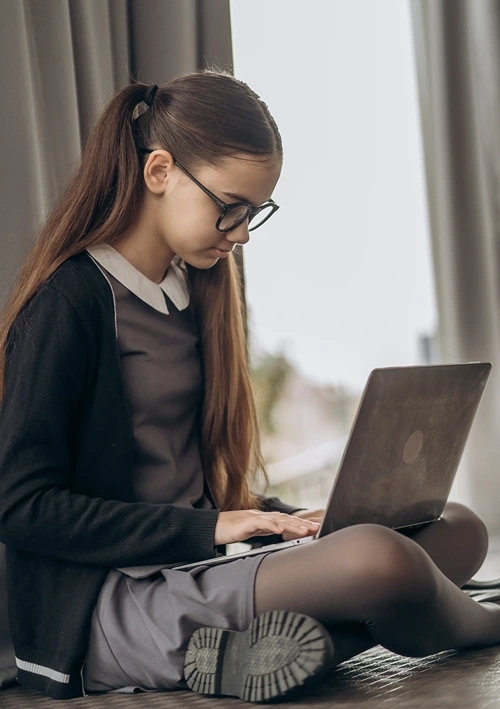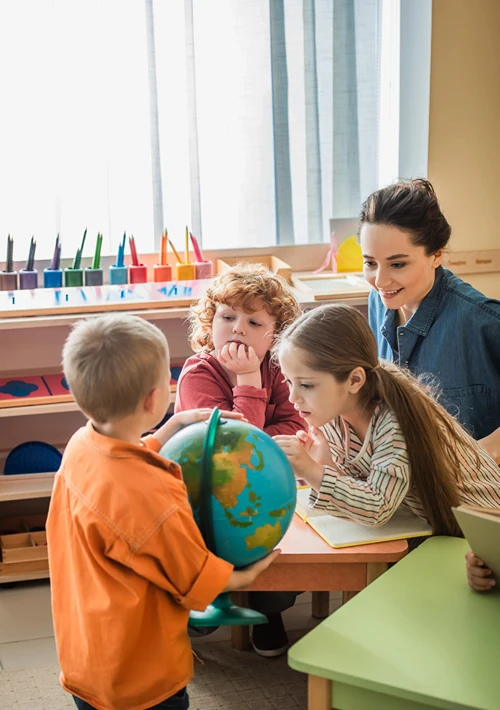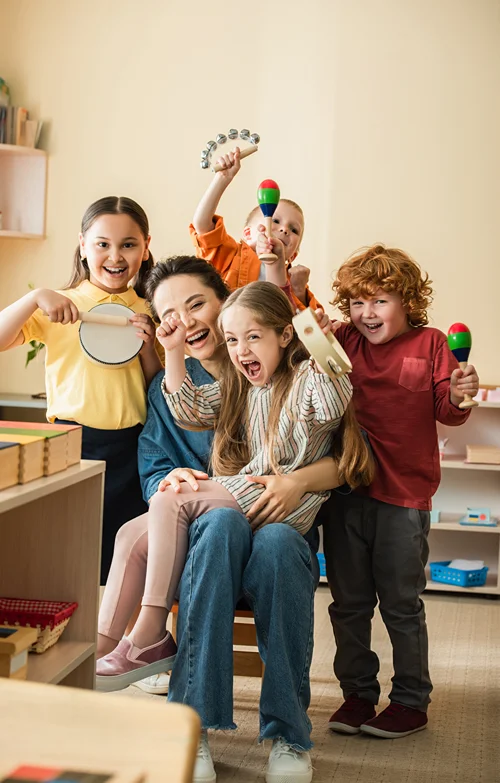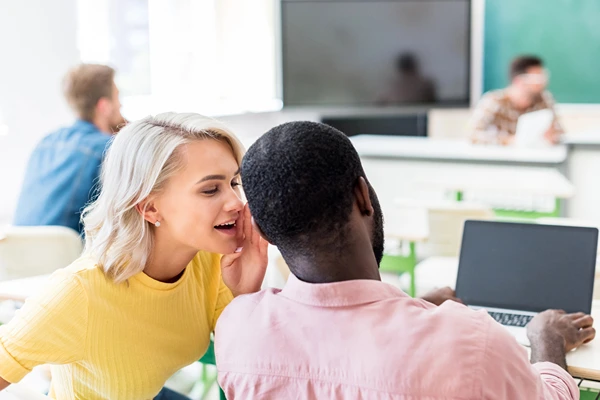8 Online Schools In Pennsylvania That Provide Flexible Learning Options for Families
The shift toward online education may have started during the pandemic, but it continues because parents see benefits from this learning mode. Online schools offer true flexibility that fits families’ unique needs and schedules. Whether your child focuses best at 7 a.m. or hits their stride after lunch, online learning adapts to them.
Pennsylvania offers excellent online school options, from free public cyber charter schools to specialized programs with unique features. Discover what’s available and find the right fit for your family.
Understanding Online School Options in Pennsylvania
Pennsylvania has three main types of online schools:
- Public cyber charter schools: These schools are tuition-free for all Pennsylvania residents and funded by taxpayer dollars, just like traditional public schools. They must meet state standards and offer complete K-12 programs.
- Private online academies: They charge tuition but often provide more personalized services or specialized curricula.
- District-run virtual programs: Some local school districts offer them to their students.
Pennsylvania’s public cyber charter schools are free, but the state Department of Education must approve them. Private schools set their tuition rates. Both types can offer excellent education, but public cyber charters make quality online learning accessible to everyone.
What Are the Best Cyber Schools in Pennsylvania?
These eight schools stand out for their commitment to flexible learning options and strong support for Pennsylvania families. Each offers unique features to help your child succeed in an online learning environment.
1. CCA
CCA stands out for its commitment to flexible, personalized learning. Students can learn at their own pace at a time that works best for their families. While students must log in to the learning platform for each of the 180 school days on the board-approved calendar to be considered present, each school day doesn’t need to be the same length or cover the same amount of content.
This K-12 public cyber charter school provides free personalized educational programs to Pennsylvania families. CCA offers robust support through custom programs and flexible online schedules that adapt to each student’s needs. The school emphasizes social connections through various student opportunities to meet and build friendships.
CCA also provides real-world work experiences, giving students practical skills alongside academic knowledge. The school’s accredited programs ensure credits transfer seamlessly to other schools or colleges.
2. PA Cyber
PA Cyber serves students from kindergarten through 12th grade, with nine regional offices providing online and in-person enrichment opportunities. This hybrid approach gives families maximum flexibility.
PA Cyber holds accreditation from the Middle States Association, National Collegiate Association and AdvancED. Its curriculum consistently meets the highest quality standards while offering personalized learning approaches.
The school excels at creating a new kind of school experience that’s built around how each student learns best. Students can participate in online learning from home while accessing in-person activities and support when needed.
3. PA Virtual Charter School
PA Virtual Charter School focuses on individual students and provides interactive learning experiences. It serves K-12 students with dedicated teams for elementary, middle and high school.
The school offers Advanced Placement (AP) courses and emphasizes personalized online learning experiences. It hosts numerous field trips each month and offers socialization opportunities through various student clubs and service learning opportunities.
PA Virtual Charter School’s support services include counselors, family support coordinators, pupil health services and parent engagement specialists. This team ensures families can successfully navigate online learning.
4. 21st Century Cyber Charter School (21CCCS)
Serving Pennsylvania students in grades six to 12, 21CCCS has earned recognition as an Apple Distinguished School for 2022-2025. This designation highlights a school’s innovative use of technology to create unique learning experiences.
21CCCS provides a rigorous, personalized curriculum delivered by highly qualified staff within a supportive educational environment. Students consistently perform well on annual Pennsylvania System of School Assessments, Keystone Exams and standardized tests.
21CCCS has been ranked in the top 10% on the College Ready Benchmark among Pennsylvania high schools. Its focus on academic excellence and technological innovation makes it appealing to families seeking high-quality online education.
5. Reach Cyber Charter School
Reach Cyber Charter School serves nearly 7,200 students. It’s known for providing excellent individual attention that makes students feel like they’re attending a small school.
The school offers a unique STEM focus, dedicated statewide social outreach, career experiences and comprehensive professional development for teachers. Multiple schedule options allow families to choose what works best for them.
Reach Cyber Charter School emphasizes building community through statewide family events and activities. This helps address the socialization aspect that concerns many parents about online education.
6. Pennwood Cyber Charter School
Pennwood Cyber Charter School partners with Drexel University’s Goodwin College of Professional Studies to provide K-12 online education. This collaboration provides high school students with project-based learning opportunities designed to increase employment opportunities in high-demand careers.
The school uses Connections Academy’s proven virtual learning model, which has been successful for over twenty years. All students participate in a three-week C-term in March, making their academic year 195 days instead of the standard 180.
This approach emphasizes career education and work standards, giving students practical skills alongside academic knowledge. The school also collaborates with the Cook Center for Human Connection to offer additional counseling and mental health support.
7. Insight PA Cyber Charter School
Insight PA Cyber Charter School focuses on removing barriers to education so every student can learn in a supportive, engaging environment. It serves K-12 students and has dedicated counselors for each grade level.
The school offers career courses in various fields to help prepare students for the job market after graduation. It also provides support through the Learner Engagement and Attendance Program (LEAP) and student resource and attendance specialists. Insight PA Cyber Charter School’s curriculum helps students develop important life skills.
8. Agora Cyber Charter School
Agora Cyber Charter School serves K-12 Pennsylvania students. It has built a reputation for supportive teachers and effective family coaching. Agora Cyber Charter School focuses on helping students become better people and more confident learners.
The school provides strong support systems that help students succeed in their online learning journey. Agora Cyber Charter School’s experience in online education means it has had time to refine its approach to better serve families.
Benefits of Flexible Online Learning for Families
Online schools excel at adapting to families’ needs. Students can work ahead in subjects they love or take extra time with challenging concepts. Early risers can tackle math at dawn, while night owls can dive into history after dinner.
This flexibility extends beyond scheduling. Online schools often offer courses that local schools can’t always provide, from advanced languages to specialized career training in computer programming, healthcare or business.
Many online schools also support students with different learning needs. Whether your child has learning differences or is academically gifted, online programs can provide individualized attention that’s hard to find in traditional classrooms.
Comparing Pennsylvania’s Top 8 Online Schools
When evaluating online schools, look for the key features that matter most to families seeking flexibility. Accreditation ensures that course credits transfer and the education provided meets quality standards. Flexible scheduling means students can learn at their own pace and time. Strong support services can include counselors, tech support and coaches who help students succeed.
| School | Grades Served | Schedule Flexibility | Key Features | Support Services | Accreditation |
| CCA | K-12 | Self-paced, flexible daily schedules | CCAWorks ® career initiative, social opportunities | Custom programs, family coaching | State-approved |
| PA Cyber | K-12 | Personalized learning approach | Nine regional offices, hybrid options | Online and in-person enrichment | Middle States, AdvancED |
| PA Virtual Charter School | K-12 | Interactive learning experience | Monthly field trips, AP courses | School counselors, family coordinators | State-approved |
| 21CCCS | 6-12 | Rigorous personalized curriculum | STEM focus | Academic advisors, counselors | State-approved |
| Reach Cyber Charter School | K-12 | Multiple schedule options | STEM focus, statewide events | Small groups, individual attention, family events | State-approved |
| Pennwood Cyber Charter School | K-12 | Flexible individualized approach | Drexel University partnership, C-term | Mental health support, career preparation | State-approved |
| Insight PA Cyber Charter School | K-12 | Supportive, engaging environment | Career tech courses, LEAP | Grade-level counselors, attendance specialists | State-approved |
| Agora Cyber Charter School | K-12 | Traditional online structure | Two decades of experience in online learning | Family coaching, teacher support | State-approved |
Methodology
Selecting Pennsylvania’s best online schools focused on three critical factors — scheduling flexibility, support services and unique features. Flexible scheduling includes self-paced learning options and customizable daily schedules. Counseling, technical assistance and family coaching programs comprise support services. Career preparation initiatives and specialized curriculum were considered unique programs and features.
All schools included in this list are state-approved and accredited, ensuring quality education and credit transferability. Prioritization was given to schools that demonstrate strong track records of student success.
How to Decide What Online Schools Provide the Most Flexible Learning Options for Families
Start by asking yourself what flexibility means for your family. Do you need the ability to travel? Does your child work better at non-traditional hours? Are you seeking specific courses or programs?
Compare schools based on curriculum quality, support services and flexibility options. Look for state approval and accreditation to ensure credits will transfer. Check what technology and support the school provides.
Talk to current families and read reviews from parents whose situations are similar to yours. Many schools offer information sessions or trial periods that let you experience their approach before committing.
Consider your child’s learning style and social needs. Some students thrive with complete independence, while others need more structure and regular check-ins with teachers. Online resources can also help you make your decision. The Pennsylvania Association of Intermediate Units provides district-run online program information.
FAQs
How Do Cyber Schools Support Socialization?
Pennsylvania cyber schools offer multiple ways for students to connect. Most provide virtual clubs, online group projects and interactive class discussions. Many also host in-person events like field trips, regional meetups and graduation ceremonies.
Schools often organize statewide family events and social gatherings, so socialization looks different but isn’t missing.
What Technology Does My Child Need for Online School?
Most schools provide software and learning materials, and some also provide computers freely or at discounted rates depending on eligibility. You’ll need reliable internet access and a quiet space for learning. Schools typically offer technical support to help with any issues.
How Does State Testing Work With Online Schools?
Students in cyber schools take the same state tests as traditional public school students. Schools arrange testing and approved locations — often regional centers — where students can take tests in person.
Empowering Your Family’s Learning Journey
Online education in Pennsylvania offers families flexibility and choice. Whether you choose a large established school or a specialized program, the key is finding the right fit for your child’s unique needs and your family’s lifestyle.








